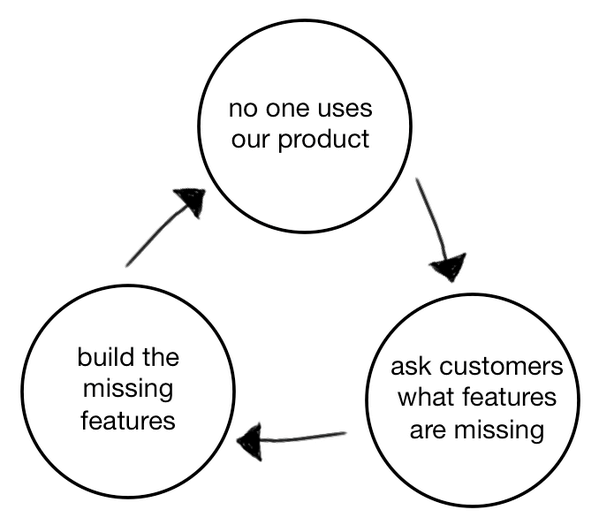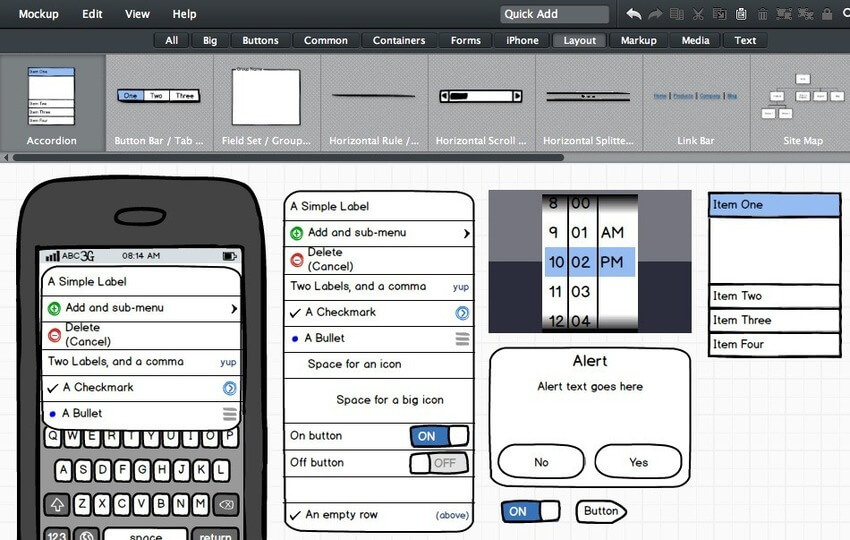
5 Best Practices for Apple Search Ads
Posted on July 3rd, 2024
Are you leveraging Apple Search Ads the right way? Take a look at these recommendations to optimize your paid campaigns and target the right users.

Help! I have an app idea but no programming skills! If you read our post on mobile app ideas, you have taken the initial steps to validate and determine the feasibility your app idea. You could continue to validate the idea (and reduce uncertainty and risk) by trying to measure interest in your proposed solution. One fairly simple method is to create ads and measure click thru rates and signups for your hypothetical app. This type of validation may not be a good indicator of interest for mobile apps. Unlike other software products, like a SaaS application for example, people want mobile apps now. Signing up for a mobile app's future release is not a great measure of existing demand. Similarly, minimum viable products (or MVPs) for mobile apps can be difficult as the narrow focus of most apps is the MVP. This article does a great job nailing down the challenge of the MVP for mobile, and where to focus.

Rather than think in terms of an MVP for mobile apps, think in terms of essential and differentiating features. What are the minimum features necessary to deliver your app idea to the market to test response and demand?
Everyone, from developers to marketers to customers have a tendency to think more features is better, or that this next feature is the "killer feature" and will change everything. It is normal to think or want to add everything, or at the very least, add much more than you need to test your assumptions about how your app idea solves a problem. Here is the reality:

Challenge yourself to identify and focus on the core features, benefits and audience of your app. The very best way to start defining your app - what it does, how users interact and the essential features - is by creating a wireframe.
There are outstanding tools available, many free or under $10/mth. Proto.io and Balsamiq are both easy to learn and use, and provide all that you may need for mobile app wireframing.


There are a few things which make these tools super valuable, especially for someone wireframing up their first mobile app:
1 - they come with all sorts of iOS and Android UI elements. This means fast wireframing, and also provides a feel for how the app might actually look.
2 - support for links or navigation. Huge. It is amazing how much is discovered from the user experience (UX) perspective when you start navigating from screen to screen.
The devil is in the details, and wireframing your app idea has a way of surfacing the details you may have overlooked. How your app works from the front-end is defined in the wireframe.
Does it take a user 2+ clicks to get to your app's primary function or feature?
How will users access support?
What mechanics do you plan to add to keep users engaged?
How does the app make money?
Building a mobile app without programming skills requires investing time in defining how the app is supposed to work and helps developers or an agency better understand your vision. The agency, developer or development team may request a product/software requirements doc, or they may build one for the project - but you should start with a wireframe. Once you have built a wireframe that defines your app idea, take another look to eliminate (or add) features.
Locating a problem or opportunity, defining a solution and actually building the mobile app is only part of creating a successful mobile app. In fact, there are more good mobile apps in the app stores than strong marketing efforts to support them. Marketing is the scarce resource in the mobile app marketplace, not ideas or development. As a non-technical contributor, you absolutely must have a plan for the sales and marketing of your app. We are way, way past the days of "If you build it - they will come".

Locating cost-effective user acquisition channels for mobile app installs and users is the biggest challenge of most mobile app publishers and marketers. If you have a large audience already, and your mobile app idea serves this audience, you are in a good position. Examples include a well read blog, large and engaged social media following or large email list. Kim Kardashian Hollywood shows what 100m social followers can do.  Fit Men Cook shows what 1m Instagram followers can do.
Fit Men Cook shows what 1m Instagram followers can do.  Both activated their existing audience to install and engage with their mobile app. If you don't have a large audience to promote your app to, app store optimization (ASO)
provides a potentially high ROI channel you can build from scratch. Advertising is a potentially scalable option, but cost per install campaigns are running in excess of $2 per install.
If your app monetizes at better than $2 per install, mobile Facebook ads and other mobile ad networks can be a good option. Companies like Twitter, Pinterest and SnapChat are working to provide the very best mobile ad platforms as most of their users are interacting with their apps from mobile devices. Whether you have a rapport with an existing audience, or you plan to invest in ads, your mobile app marketing should start with an optimized app store listing - which is part of a comprehensive ASO plan.
Both activated their existing audience to install and engage with their mobile app. If you don't have a large audience to promote your app to, app store optimization (ASO)
provides a potentially high ROI channel you can build from scratch. Advertising is a potentially scalable option, but cost per install campaigns are running in excess of $2 per install.
If your app monetizes at better than $2 per install, mobile Facebook ads and other mobile ad networks can be a good option. Companies like Twitter, Pinterest and SnapChat are working to provide the very best mobile ad platforms as most of their users are interacting with their apps from mobile devices. Whether you have a rapport with an existing audience, or you plan to invest in ads, your mobile app marketing should start with an optimized app store listing - which is part of a comprehensive ASO plan.
Building your app idea without programming skills is very possible, but requires you to clearly define the idea with a wireframe, and lead the effort in defining a sales and marketing plan.

Are you leveraging Apple Search Ads the right way? Take a look at these recommendations to optimize your paid campaigns and target the right users.

Ghostly happenings are among us... and in your app listing too? If you aren't leveraging the power of app seasonality to make relevant tweaks to your store listing you're leaving precious engagement and conversions on the table.

Developers on the iOS App Store should plan in advance of the upcoming Holiday Schedule to allow enough time for apps to get approved during the busy holidays.